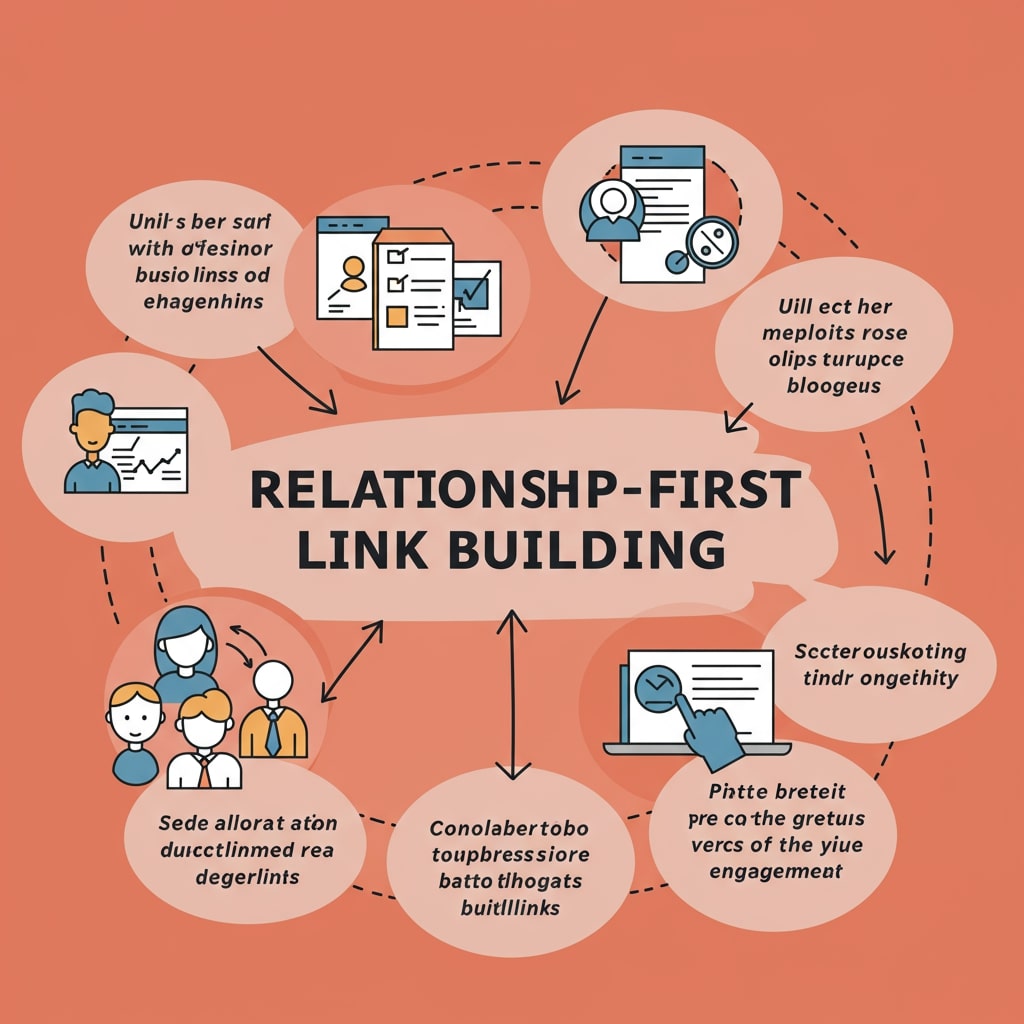
In the ever-evolving world of SEO link building, quality beats quantity every time. Traditional outreach methods often prioritize speed over substance, leaving site owners buried in templated email blasts and cold requests. Relationship-first link building flips the script by focusing on genuine interactions, mutual benefits, and long-term collaboration. This approach not only leads to higher approval rates for backlinks but also nurtures lasting partnerships that can continue to yield results for months or even years. As search engines refine their algorithms to favor authoritative and relevant sources, link profiles built on genuine relationships carry more weight than those assembled through mass outreach tools. In this post, we will explore the fundamentals of relationship-first link building, explain why it matters more than ever, and provide actionable steps to integrate it into your SEO strategy. By cultivating trust and authority through strategic outreach, you can secure high-impact links while fostering goodwill in your industry community.
What Is Relationship-First Link Building

At its core, relationship-first link building is the practice of establishing meaningful connections with industry peers, bloggers, influencers, and site owners before requesting a backlink. Instead of sending a generic template and hoping for a response, practitioners invest time in research to understand the interests and goals of potential partners. This might involve engaging with their content on social media, commenting thoughtfully on their blog posts, or sharing their work with your audience. By demonstrating genuine interest and offering value upfront, you set the stage for collaborative opportunities that feel natural rather than transactional. Over time, these efforts build credibility and trust, making it easier to secure high-quality backlinks, guest post slots, or co-marketing initiatives. Relationship-first link building transforms outreach from a one-off transaction into an ongoing partnership that benefits both parties.
Why Relationship-First Strategies Matter for SEO
Search engines have become increasingly sophisticated at detecting manipulative link schemes and valuing links that reflect genuine endorsements. When a respected site in your niche links to your content, it sends a strong signal of relevance and authority. Relationship-first strategies align with these algorithmic priorities by emphasizing authenticity and context. Moreover, collaborations formed through relationship-first outreach tend to yield more than just a single backlink; they can lead to content co-creation, social media amplification, and joint webinars or events. These extended forms of engagement bring referral traffic, brand awareness, and additional SEO benefits. Perhaps most importantly, relationship-first link building mitigates the risk of penalties associated with spammy or low-quality links, ensuring the long-term health of your backlink profile and organic rankings.
Key Steps to Effective Relationship-First Link Outreach
- Identify Strategic Partners and Niches: Conduct thorough research to pinpoint websites and influencers that align with your industry, values, and audience. Use SEO tools to analyze domain authority, traffic metrics, and content relevance. Narrow down to a targeted list of potential collaborators with a genuine interest in your offerings.
- Personalize Every Interaction: Craft outreach messages that reflect your knowledge of the recipient’s work. Reference specific blog posts, social media updates, or recent achievements. Personalization demonstrates respect and increases the likelihood of a positive response.
- Offer Value Before Asking: Provide something useful upfront, such as a detailed case study, an infographic, or an invitation to co-author content. When you lead with value, recipients are more inclined to reciprocate with a backlink or collaboration.
- Leverage Multiple Outreach Channels: Combine email with social media engagement, online community participation, and even virtual networking events. A multi-channel approach reinforces your presence and fosters genuine connections.
- Follow Up Thoughtfully: If you don’t receive a reply within a week, send a polite follow-up that adds new value or insights. Avoid generic reminders; instead, reference a recent development or share an additional resource that aligns with the recipient’s interests.
- Maintain Ongoing Communication: After securing a backlink, nurture the relationship by sharing performance updates, offering exclusive previews of new content, or proposing future collaborations. Long-term engagement often leads to multiple linking opportunities over time.
Advanced Tactics for Scaling Relationship Outreach
Scaling personalized outreach in a relationship-first framework requires a blend of smart automation and human touch. Start by using CRM or outreach tools to organize your contact list, track communication history, and set reminders for follow-ups. Create templated outlines with placeholders for custom details, ensuring that every email feels tailored. Consider implementing a tiered system where high-priority contacts receive more bespoke messages, while lower-priority prospects get streamlined outreach. You can also automate social media touches, such as liking or sharing posts automatically when someone meets specific criteria. To add an extra layer of personalization at scale, integrate data from public APIs or social listening platforms to reference recent news, awards, or milestones in your messages. Always allocate time for manual review and final customization before hitting send.
Measuring Success and Refining Your Approach

Tracking the effectiveness of relationship-first link building involves monitoring both qualitative and quantitative metrics. Quantitative metrics include the number of backlinks acquired, the domain authority of referring sites, referral traffic, and the impact on keyword rankings. Qualitative metrics focus on the quality of relationships: the level of engagement in conversations, repeat collaboration invitations, and positive sentiment expressed by partners. Use your CRM to log these details and generate regular reports that reveal trends and areas for improvement. A quarterly review can help you identify which outreach templates work best, which content formats resonate most with your audience, and which industries or niches offer the highest ROI. Based on these insights, refine your targeting criteria, outreach cadence, and value propositions.
Common Pitfalls and How to Avoid Them
- Over-Automation: Relying too heavily on mass email tools can strip outreach of authenticity. Balance automation with manual customization to maintain a personal touch.
- Poor Research: Generic messages that overlook basic details about the recipient’s work can backfire. Dedicate time to researching each prospect to ensure your pitch is relevant and respectful.
- Lack of Follow-Through: Failing to nurture relationships after the first link request can result in missed opportunities. Schedule regular check-ins and look for ways to provide ongoing value.
Conclusion
Relationship-first link building represents a paradigm shift from transactional outreach to genuine partnership. By investing in strategic research, delivering tailored value, and maintaining long-term engagement, you can earn high-quality backlinks that boost SEO performance and reinforce your brand authority. While this approach demands more time and effort upfront, the dividends in terms of trust, referral traffic, and sustainable growth are well worth the investment. Start small by piloting relationship-first tactics with a select group of prospects, learn from your results, and gradually scale your process as you refine your strategy. With patience and persistence, you’ll build a network of advocates who champion your content and elevate your SEO success.
Additional Resources
- Ahrefs Guide to Link Building – Comprehensive strategies and real-world examples for modern SEO professionals.
- MOZ Link Building Best Practices – Detailed advice on outreach methods, partnership formation, and quality indicators.
- Backlinko Link Building Techniques – In-depth case studies and advanced tactics to supercharge your backlink profile.
If you’re looking to boost your SEO with engaging tools, consider implementing an Interactive Link Building strategy to attract high-quality backlinks through valuable user experiences.









Leave a Reply